Recent Articles
Popular Makes
Body Types
2017 Hyundai Sonata Sport Road Test and Review
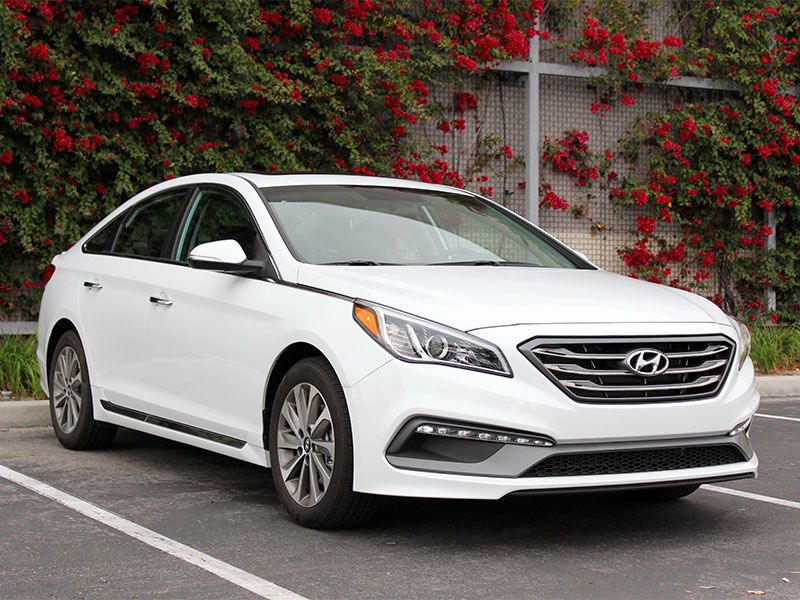
2017 Hyundai Sonata exterior front angle by Miles Branman ・ Photo by Miles Branman
Competing in the midsize sedan market is a bit like swimming with sharks. The top predators get their fill before lesser vehicles collect the scraps. For years, Honda’s Accord and Toyota’s Camry dominated the food chain, leaving vehicles from Nissan, Ford, and Chevrolet to scoop up buyers who are tired of the same old spread.
This delicate ecosystem carried on with little interruption until the crossover rose to power. With fewer buyers interested in traditional sedans, competition between the established players grew even more intense. The products were forced to improve to keep consumers interested. In the process, midsize sedans became more expensive. In the late 2000s, though, Hyundai saw an opening in the market. By loading its Sonata with value, injecting it with style, and backing it with an industry-best warranty, the Korean automaker began stripping sales from the sharks.
As a result, Hyundai has climbed to mid-pack in annual sales. No longer just a value-driven product, the Sonata is a genuine competitor with a provocative groove.
How The Sonata Evolved
Unless you were among the early adopters, it may surprise you that Hyundai has sold its Sonata in the U.S. since 1988. Built on a Mitsubishi platform, the second generation Sonata made only a small dent in the American car market. The third and fourth generations of the 1990s began to attract budget-minded shoppers, but it wasn’t until the fifth generation Sonata went on sale in 2005 that production quality, safety, and size started to match segment standards. While fighting to overcome a perception of lesser quality, Hyundai took massive leaps in standard features, design, and performance. When its sixth generation hit the market in 2009, the Sonata was a completely different car. Discerning shoppers who overcame brand snobbery found one of the best values in the industry. In 2014, the current generation went on sale with a more refined exterior, higher starting price, and more features.
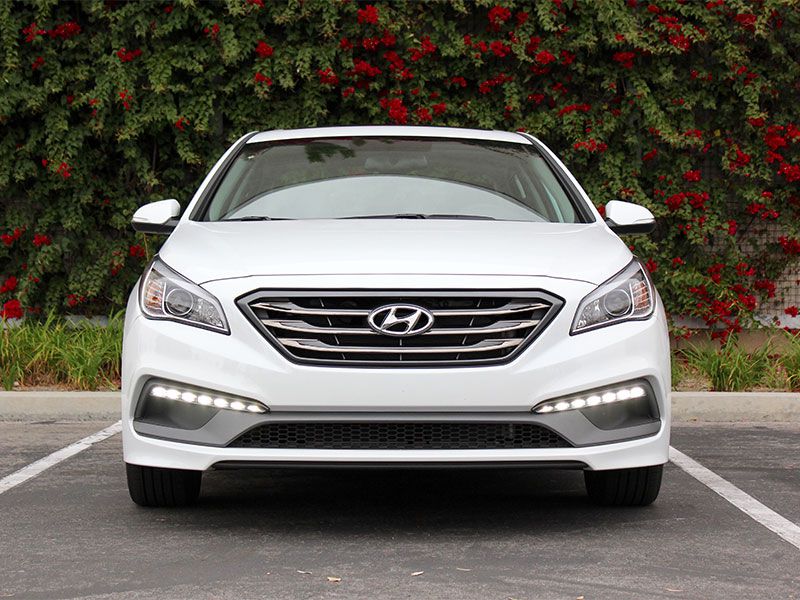
Photo by Miles Branman
Understated Styling
Much of what made the sixth generation Hyundai Sonata a massive success in the U.S. was its bold styling. Unfortunately, that didn’t translate to sales in Hyundai’s home market. For this reason, the seventh generation sedan, while handsome, doesn’t take a strong design direction. Instead, its squared shoulders and sharper lines look respectably upscale, though the overall aesthetic fails to stand out in a crowd. Fortunately for Hyundai, the midsize sedan market is not typically associated with provocative designs (apart from the striking Mazda6). The most notable exterior styling cues specific to the 2017 Hyundai Sonata Sport are its LED daytime running lights, 17-inch alloy wheels, chrome rocker panels and door handles, trunk lip spoiler, and dual chrome-tipped exhaust. While not dramatic, the new Sonata doesn’t look cheap from any angle.
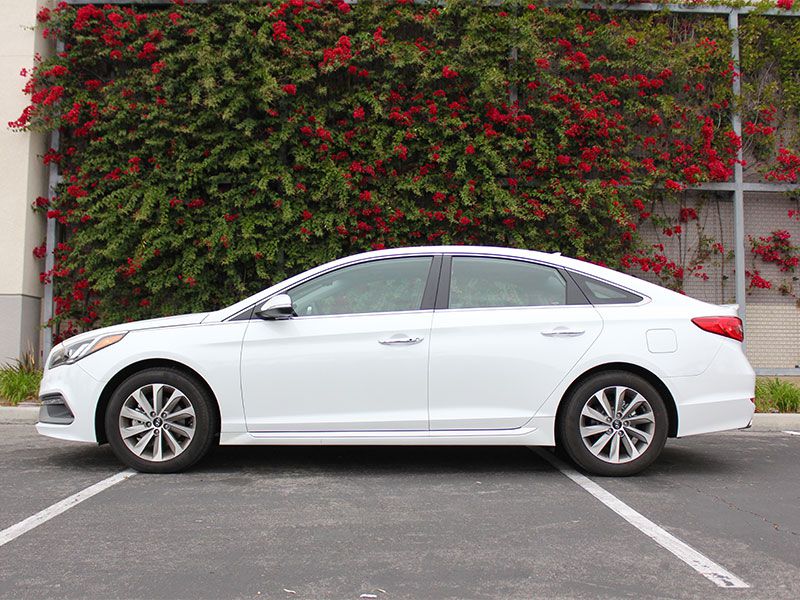
Photo by Miles Branman
Clean and Simple Cabin
The understated story continues within the Sonata’s cabin. This is one of the most user-friendly command centers on the market, with a nice mix of buttons, knobs, and touchscreen controls. Included in the Value Package is leather wrapping for the steering wheel, shift knob, and seat bolsters. Thankfully, black gloss trim—which has a tendency to smudge—is limited to thin panels on the hexagonal center stack and a surround for the gear selector. The standard 7.0-inch infotainment system features Apple CarPlay and Android Auto, giving the Sonata an edge over some rivals who forgo native smartphone integration for an automaker-specific interface. Beyond the infotainment display and steering wheel-mounted controls, the Sonata is fairly low tech (climate control settings don’t even have a temperature display), but the fit and finish of every input is excellent. Metallic-colored plastics, textured surfaces, and a dark checkered trim for the doors and dash break up the monotone cabin and add visual intrigue. As the Sonata has grown, its interior volume has become best in class. Rear passengers will enjoy plenty of leg and head room, the 60/40 split folding rear seats add versatility, and the trunk is large enough to swallow even your biggest shopping trips.
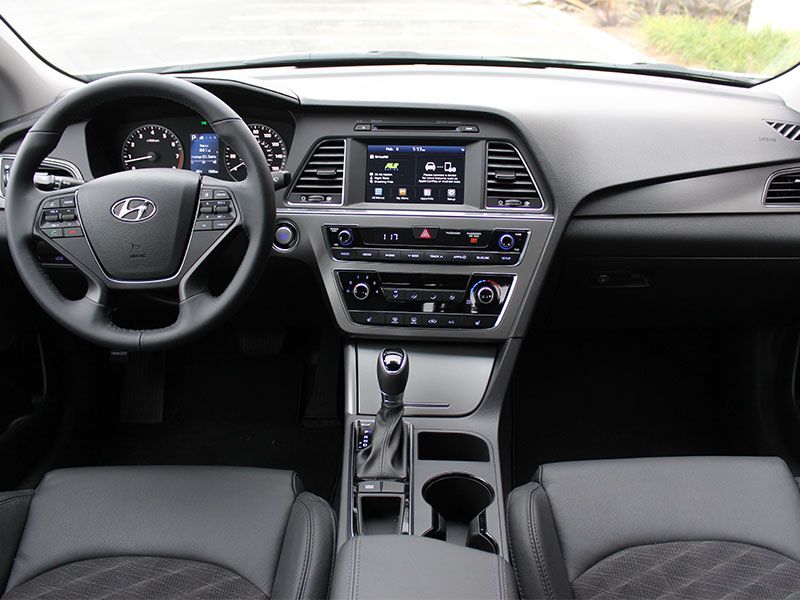
Photo by Miles Branman
Strong Performance
The Sonata comes with a choice of powertrains, but only the range-topping 2.0T can be considered potent. However, the standard 2.4-liter 4-cylinder is far from anemic. With 185 horsepower and 178 lb.-ft. of torque available via a 6-speed automatic transmission, the Sonata Sport is sufficiently quick for routine driving maneuvers, but requires some foresight for anything else. Those who don’t mind sacrificing a bit of power may find their match in the Sonata Eco and its 1.6-liter turbocharged 4-cylinder, which churns up 178 hp and 195 lb.-ft. of torque. The Eco is mated to a 7-speed dual-clutch transmission. Efficiency-minded shoppers can choose the Sonata Hybrid, which features a 2.0-liter 4-cylinder and electric motor for a combined 193 hp. Finally, the 2.0T amps up the volume with a 2.0-liter turbocharged 4-cylinder good for 245 hp and 260 lb.-ft. of torque.
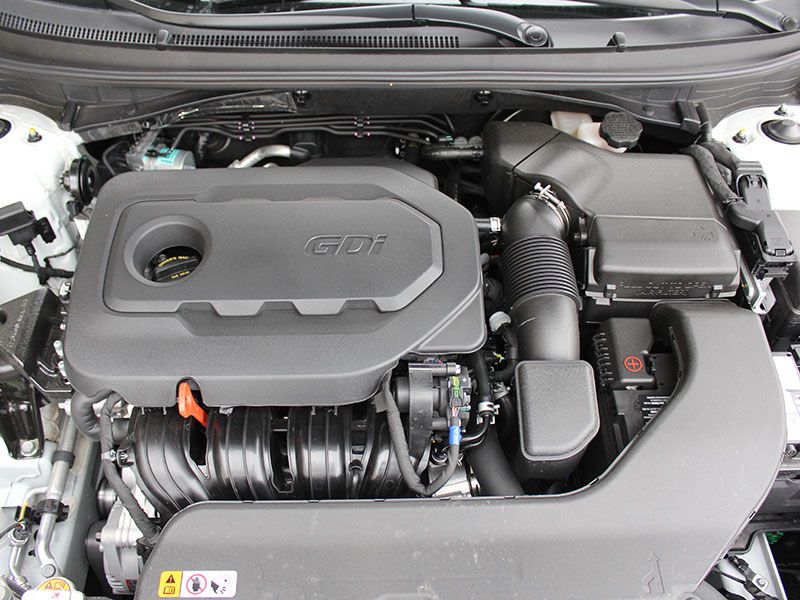
Photo by Miles Branman
Athletic Moves
Whichever engine you choose, the 2017 Hyundai Sonata has a remarkably nimble chassis and strong communication through the electric-assist steering rack. I was shocked to find Hyundai’s midsize sedan more on par with the highly entertaining Mazda6 in handling. Helped by good braking and stellar ride quality, the Sonata feels confident in every driving scenario. Complementing a solid platform are three drive modes: Eco, Normal, and Sport, which tailor the car’s performance to efficiency, smoothness, or acceleration by adjusting throttle response, gear shift speed, and steering effort. The differences between modes aren’t dramatic, but they do add flexibility to the Sonata’s performance.
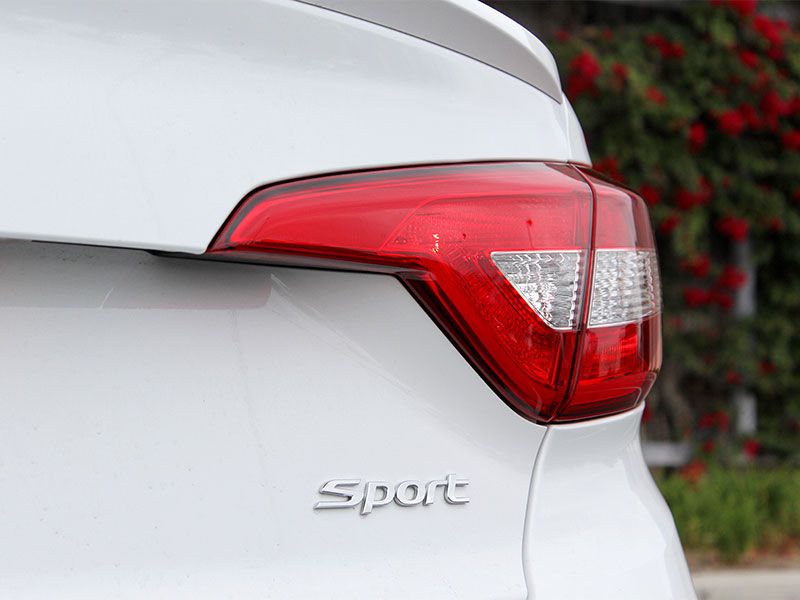
Photo by Miles Branman
Good, Not Great, On Gas
The 2.4-liter Sonata Sport checks in with middling fuel economy figures. At 25 mpg city, 35 mpg highway, and 28 mpg combined mpg, this Soanta drivers goes more than 500 miles between fill-ups, thanks in part to a large fuel tank. Comparatively, the Honda Accord bests the Sonata with 30 combined mpg, the Camry falls below with 27 combined mpg, and the Nissan Altima outshines all three with 31 combined mpg. For more impressive figures, look to the Hyundai Sonata Hybrid, which averages 39 mpg in the city and 45 on the highway.
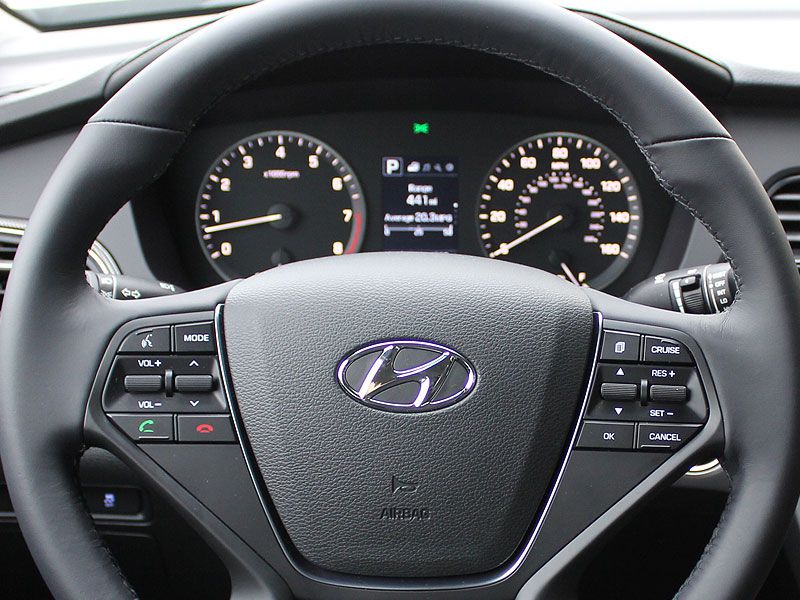
Photo by Miles Branman
Value Still Headlines
Though many of the 2017 Hyundai Sonata Sport’s best qualities can be viewed favorably without factoring in price, putting a dollar figure on the car preaches the Hyundai value story louder than ever. Unlike rivals that skimp on standard features and charge thousands for extras, the Sonata offers great value on both its base models and packages. Apart from the visual cues and technology touched on earlier, the Sonata Sport comes standard with a rearview camera, heated side mirrors with blind-spot monitoring, an emergency braking assist system, power driver’s seat with lumbar, a Sirius XM 90-day trial, Bluetooth, Hyundai BlueLink Connected Care, and a 5-year/60,000-mile new car warranty. For $950, buyers can add the Value Package, which features a power moonroof, a hands-free trunk (with auto open), proximity key entry with pushbutton ignition, BlueLink remote start, heated front sport seats, and leather-trim accents.
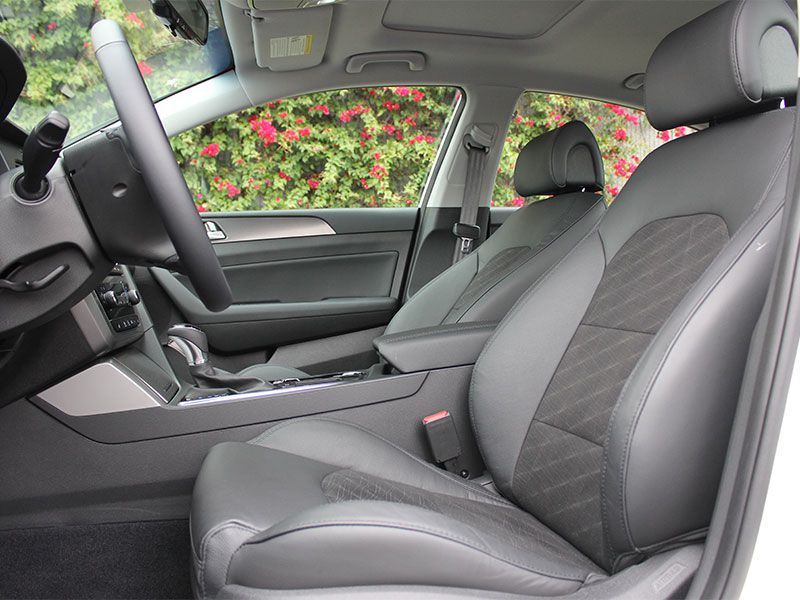
Photo by Miles Branman
Highs and Lows
Impressive handling from a composed chassis Ample cabin and trunk space with split-folding rear seats Great value, especially when it comes to optional packages Comfortable cruising at any speed Bland styling when compared to its more artfully designed rivals Few advanced convenience and safety features
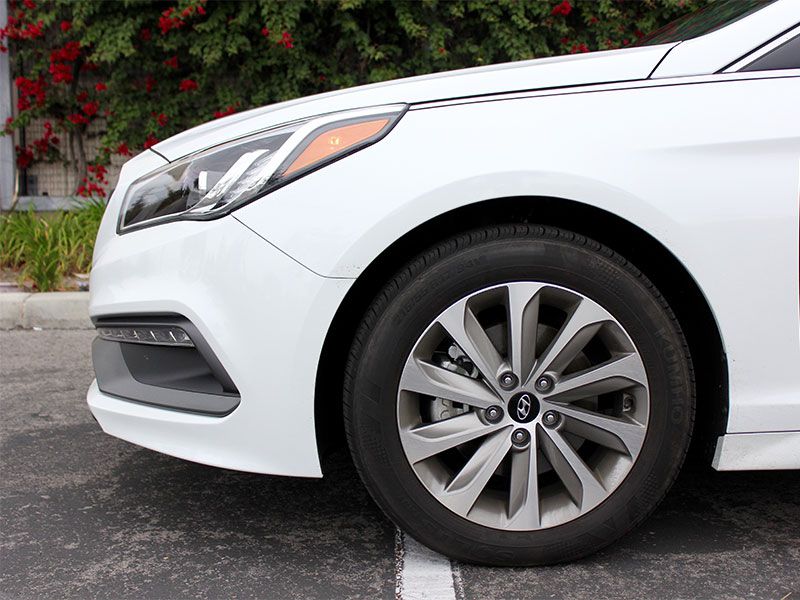
Photo by Miles Branman
The Sonata's Competition
Put simply, there are many vehicles vying for a limited number of midsize sedan shoppers. Pricing, features, and efficiency are the big keys to success, but styling, power, and cool technology also will sway shoppers. At $21,950 to start, the 2017 Hyundai Sonata undercuts almost every major competitor (Honda Accord, Toyota Camry, Mazda6, Nissan Altima, Subaru Legacy, Kia Optima, Volkswagen Passat) except for the Chevrolet Malibu ($21,680). Start adding features and the Sonata becomes an even more compelling choice. The Sonata Sport and its $23,400 price tag (do yourself a favor and tack on the $950 Value Package—the name says it all), represents the best value in the segment.
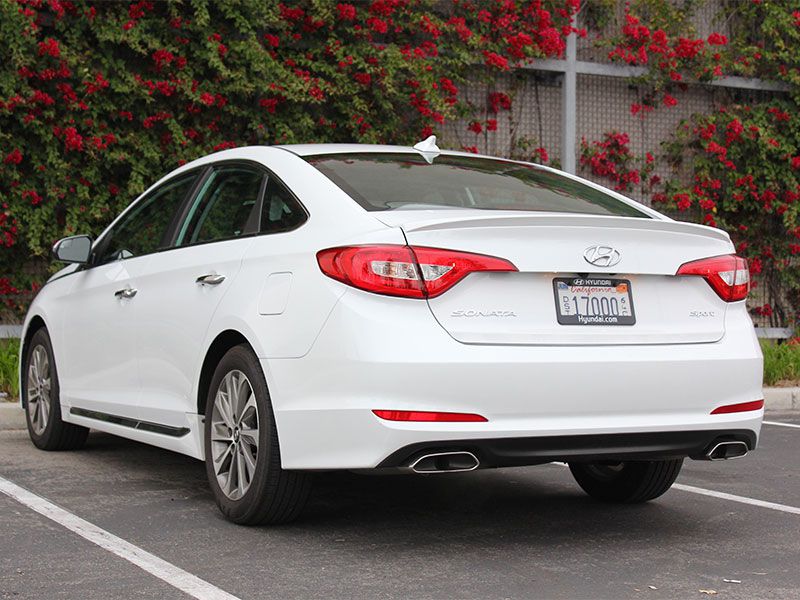
Photo by Miles Branman
Our Take
There are faster, better looking, more innovative, and more efficient options in the midsize sedan segment, but your dollar won’t travel further than with the 2017 Hyundai Sonata. It’s not just about how far the Sonata has come since its humble origins, it’s about the logic of its current form. Competent marks in performance, styling, and efficiency keep the Sonata relevant for just about any shopper, and only those who are hopelessly lost in badge-engineered rituals can write-off the Sonata’s overwhelming merits.
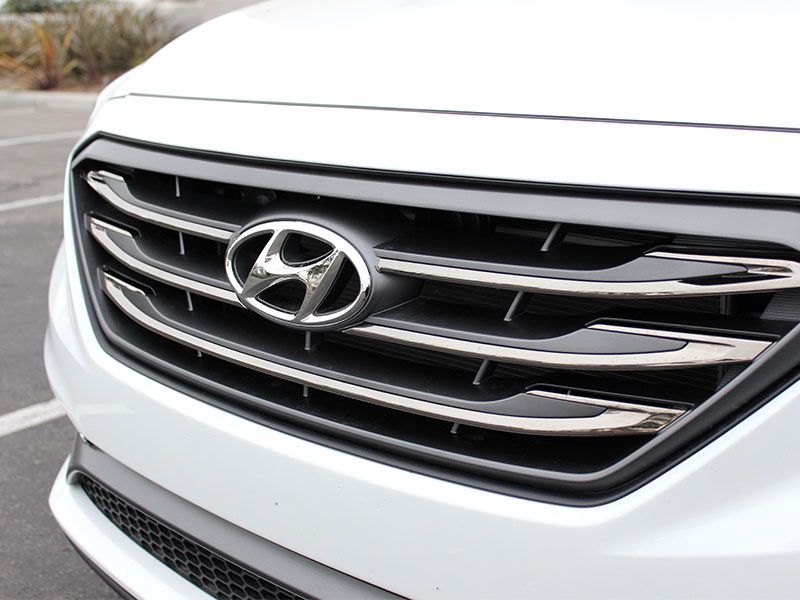
Photo by Miles Branman